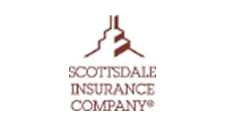10 tips to avoid accidents this winter

Winter weather frequently makes for the most hazardous driving conditions of the year. To protect you against accidents this winter, we've put together some tips for prepping yourself and your vehicle for this year's potential winter weather:
- Winterize your vehicle - Check your battery, front and rear defrosters, fill up the washer fluid and antifreeze, inflate your tires to the correct pressure, and keep your gas tank at least half full to avoid frozen fuel lines.
- Clear your windshield - Never pour hot water over the windows to melt the ice and snow. This will typically shatter the windshield. Use a plastic scraper to avoid scratching the glass and use the front and rear defrosters to melt the ice. Avoid using your windshield wipers until after all the ice and snow have been removed.
- Don't just clear your windshield - Don't forget to clear all of the other windows, as well as the roof, hood, mirrors, headlights and tail lights, license plates and the exhaust pipe. This will prevent accumulated ice and snow from becoming an airborne hazard for other drivers.
- Keep a survival kit in the car - Blankets, water-proof boots and gloves, hats, and any necessary medications should be carried in the car. Keep a small shovel, jumper cables, and something that could be used for traction (e.g. cat litter, sand, etc.) in the car as well.
- Test your limits in a safe environment - Take your car to a familiar, empty parking lot near your home after a rain, snow or ice storm. Practice emergency stops and turning at a safe speed. Be sure and watch out for light posts, curbs and parking barriers to avoid any damage to your vehicle.
- Warm up the car the right way - To avoid carbon monoxide poisoning, never attempt to warm up your car in an enclosed area. Even when outside, be sure to clear your exhaust pipe before running your car.
- Pump your brakes at the right time - If your vehicle is equipped with an Antilock Braking System (ABS), you should depress the brake pedal completely and keep it depressed. The ABS will rapidly pump the brakes for you in most situations if at least one wheel is still turning. If all four wheels have stopped turning and the vehicle is still sliding on ice, you should pump your brakes as the ABS has failed.
- Drive in the existing tracks - To help traction, try to stay within the pathway already dug by other vehicles' wheels. If you end up stuck, remember to keep your wheels as straight as possible and don't just continue spinning your tires. Spread sand or cat litter around your tires and along the path you plan on taking. In a pinch, you can also use your floor mats for traction.
- Don't turn while braking or accelerating - In rain, snow and ice, attempt to slow down before a turn and accelerate slowly after the wheel has already turned.
- Catch a skid - If you do start skidding, stay calm! Don't slam on the brakes, don't hit the gas pedal. Turn your wheel smoothly in the direction that you intend to travel. You should be able to regain control of the vehicle once it has slowed enough to regain traction. Don't turn the wheel too much, a little goes a long way and you don't want to be pointed in a dangerous direction if traction returns suddenly.
Of course the best way to avoid an accident is to stay off of the road in inclement weather. If something does happen to you during inclement weather, National General's claim team will guide you through the entire claim process and get you back on the road as soon as possible.







